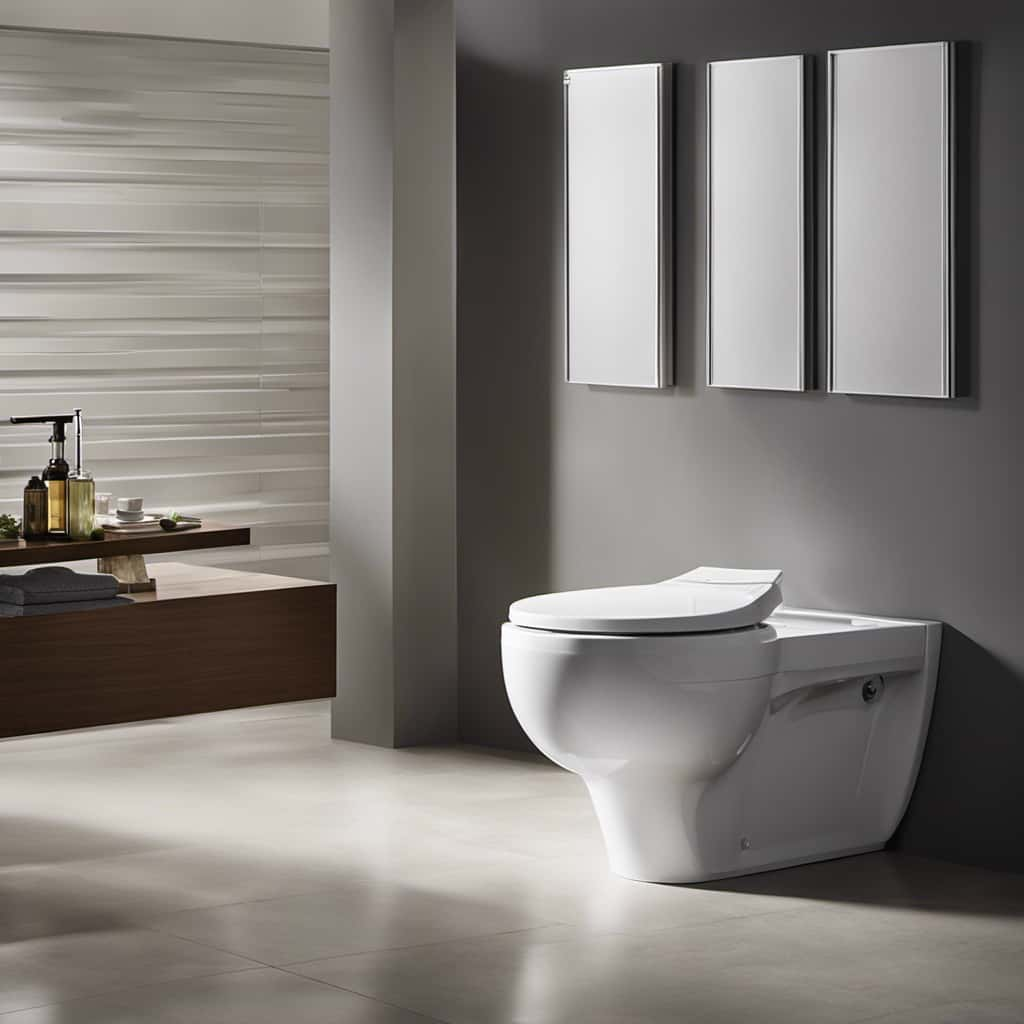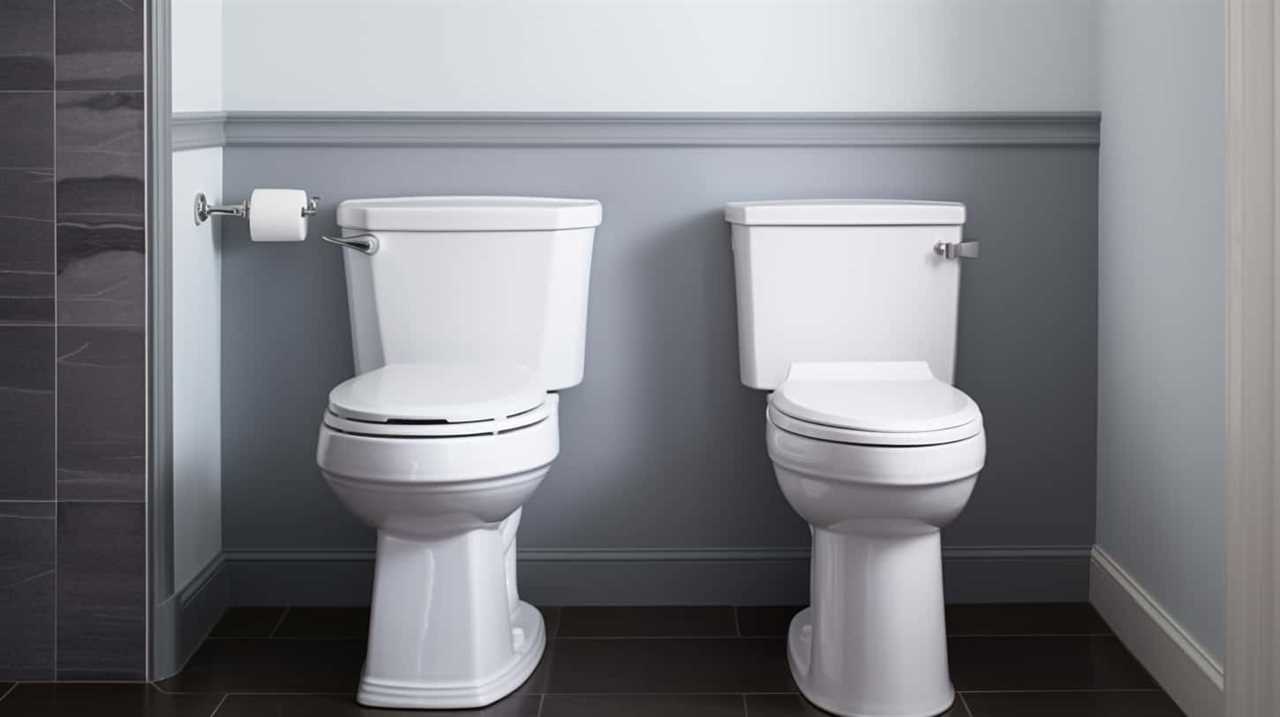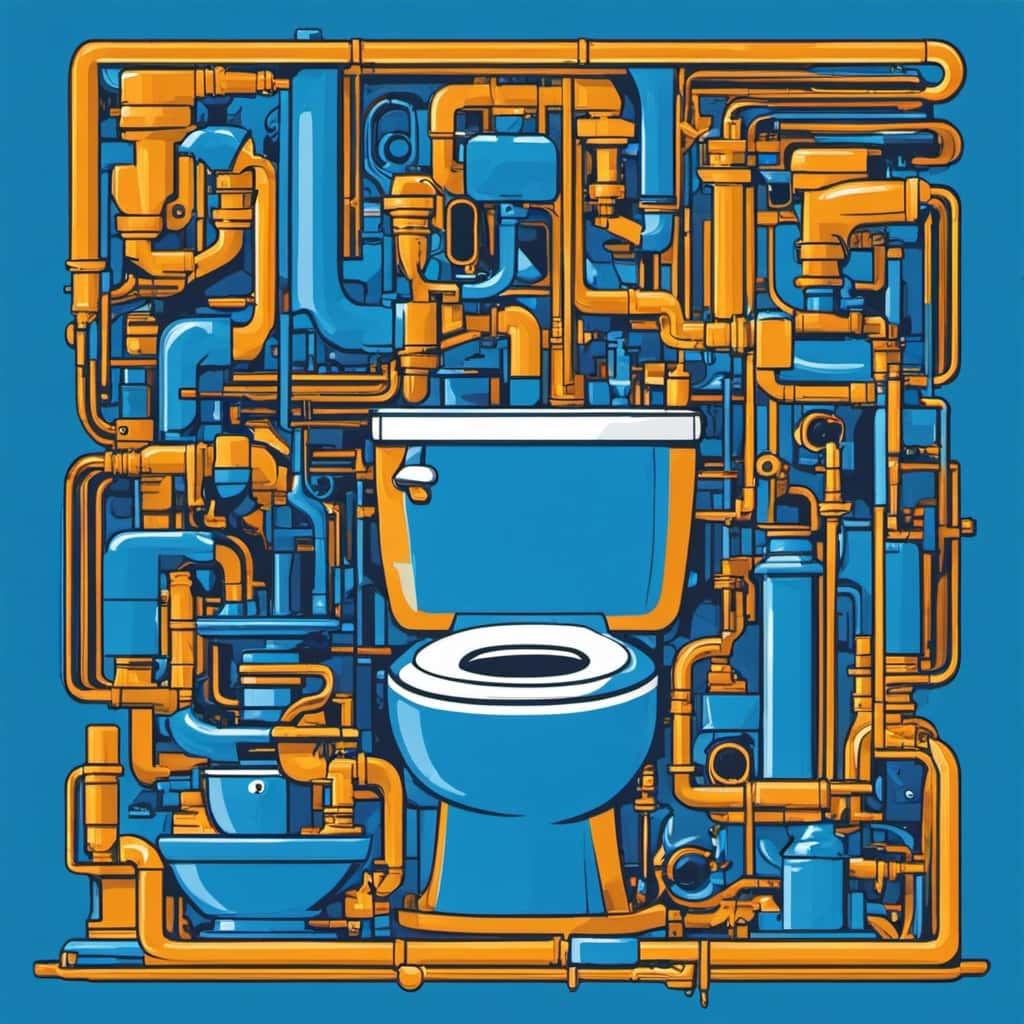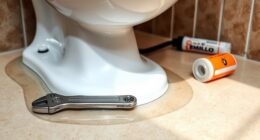Have you ever wondered how to keep a bucket toilet from smelling? Well, we’ve got you covered!
In this article, we’ll share some practical tips and tricks to ensure your bucket toilet remains odor-free.
From proper ventilation to regular cleaning and using odor control products, we’ll show you how to manage waste effectively and implement a proper cover and seal system.
Say goodbye to unpleasant smells and hello to a fresh and clean bucket toilet experience!
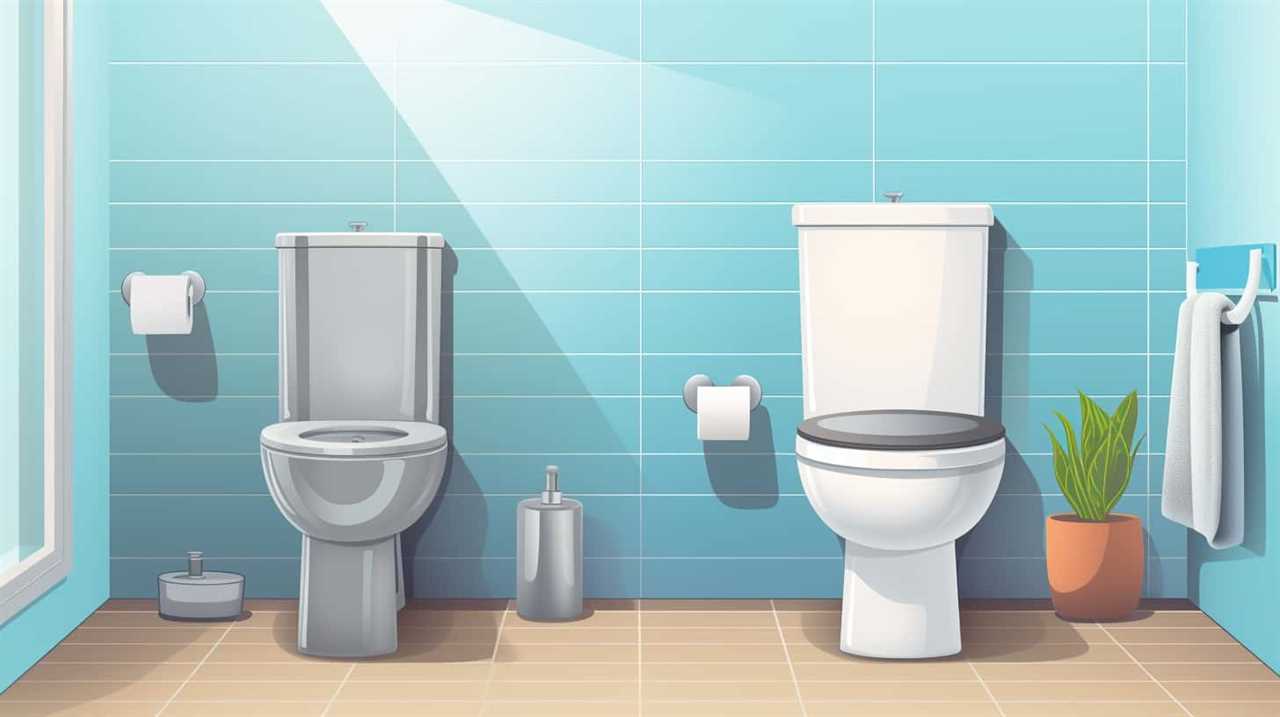
Key Takeaways
- Proper ventilation is crucial for preventing foul odors in a bucket toilet.
- Regular cleaning and disinfection are necessary to maintain a sanitary and odor-free environment.
- Odor control products, such as baking soda or air fresheners, can effectively neutralize odors in a bucket toilet.
- Effective waste management, including regular emptying and eco-friendly disposal methods, helps prevent unpleasant odors.
Proper Ventilation
To ensure proper ventilation and minimize odors, we use a vent pipe connected to the bucket toilet. This ventilation system is crucial in maintaining a clean and odor-free environment.
The vent pipe allows air circulation, effectively removing any unpleasant smells from the toilet. It works by creating a constant flow of fresh air, preventing the buildup of foul odors. Without proper ventilation, the air inside the bucket toilet would become stagnant, leading to a strong and unpleasant smell.
Regular Cleaning and Disinfection
Maintaining cleanliness and preventing odors in a bucket toilet involves regularly cleaning and disinfecting the toilet. To ensure optimal hygiene, it’s important to establish a cleaning routine and adhere to it consistently. The frequency of cleaning will depend on the usage and the number of people using the toilet. Generally, it’s recommended to clean the bucket toilet at least once a day or after each use.
When it comes to disinfection, there are several methods you can employ. One effective option is to use a bleach solution, which can be made by diluting bleach with water. Other disinfectants, such as hydrogen peroxide or vinegar, can also be used. It’s important to thoroughly clean and disinfect all the surfaces of the toilet, including the bucket, seat, lid, and any other parts that come into contact with waste.
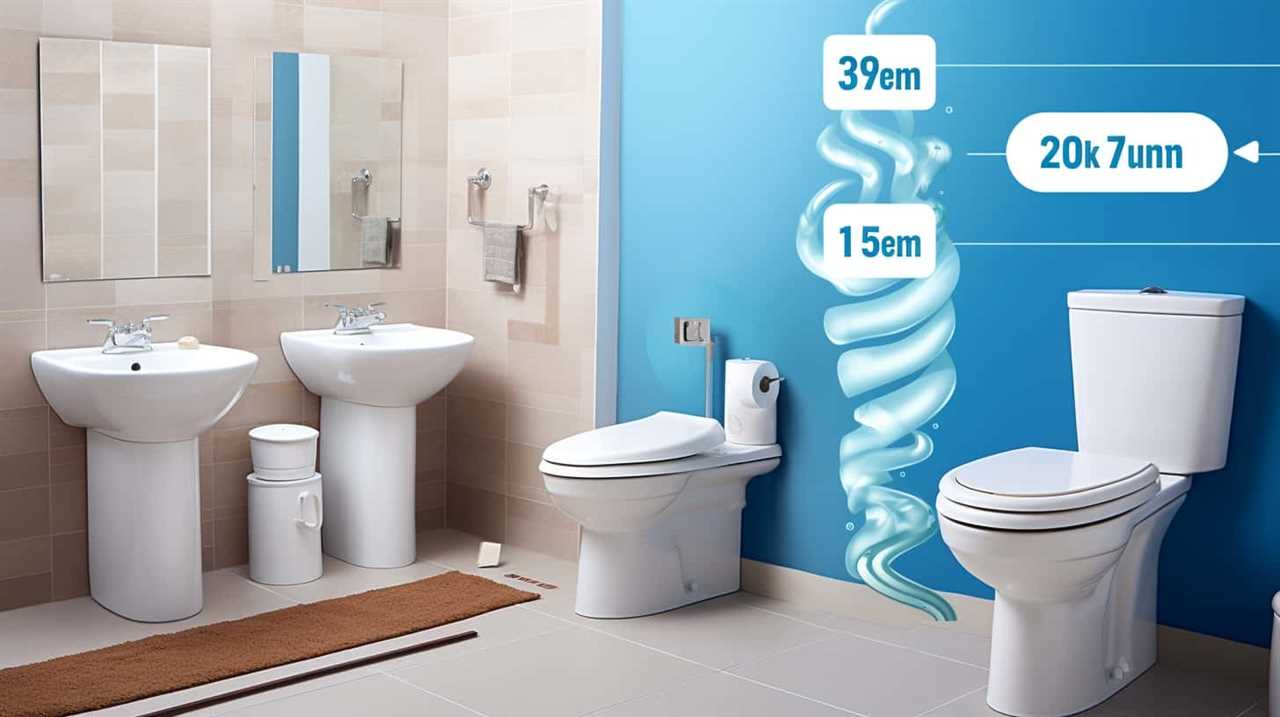
Regular cleaning and disinfection not only help in preventing odors but also ensure a sanitary and hygienic environment for using the bucket toilet.
Using Odor Control Products
To effectively control odors in a bucket toilet, we can explore the use of various odor control products.
There are natural alternatives available that can help neutralize odors without the use of harsh chemicals.
One option is to sprinkle baking soda or activated charcoal in the bucket to absorb odors. These substances are easily accessible and can be effective in reducing unpleasant smells.
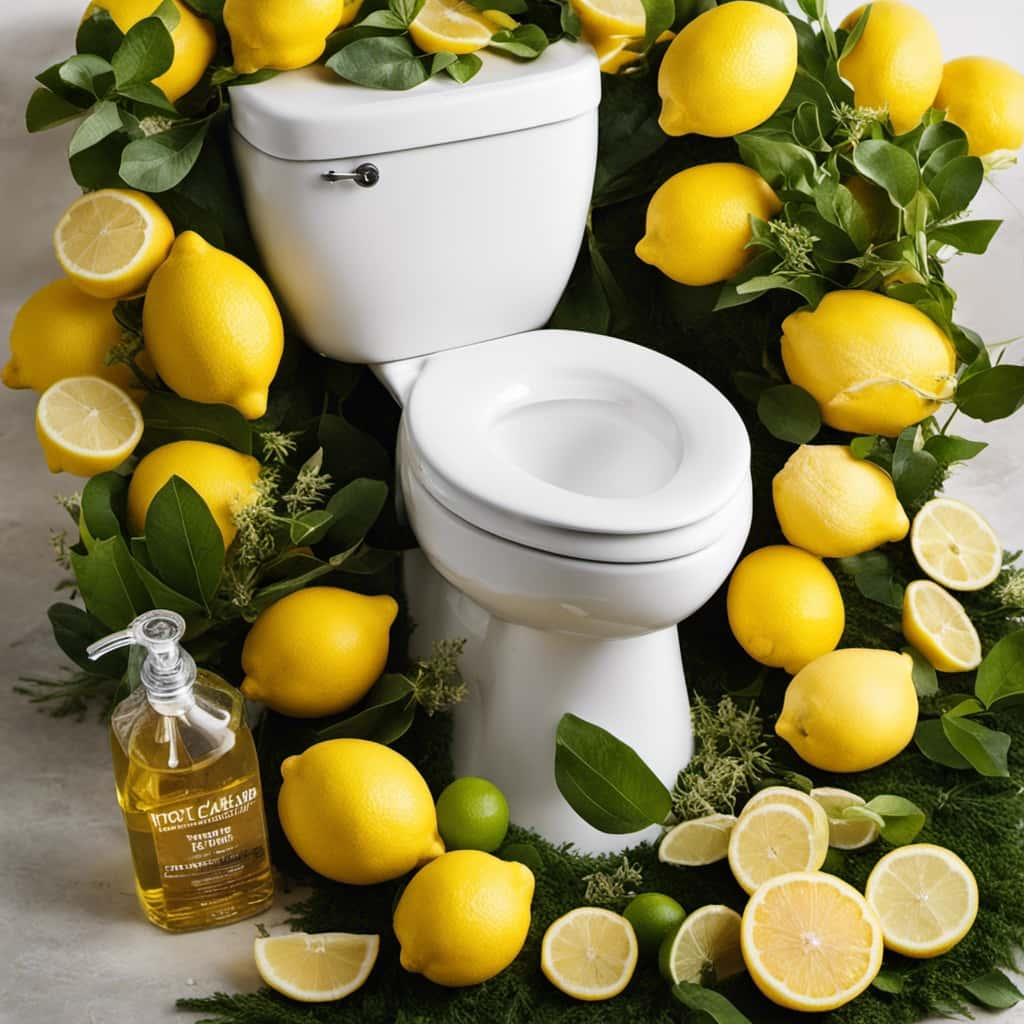
Additionally, there are DIY solutions that can be made using household ingredients. For example, a mixture of vinegar and water can be sprayed in the toilet to eliminate odors. Lemon juice or essential oils can also be added to the bucket to provide a fresh scent.
Managing Waste Effectively
Now let’s focus on how we can effectively manage waste in a bucket toilet to prevent any unpleasant odors. Waste management techniques are crucial to maintaining a clean and odor-free environment.
Firstly, it’s important to ensure proper ventilation by keeping the lid closed when the toilet isn’t in use and opening windows or using fans to promote airflow.
Regularly emptying the bucket is essential to prevent the buildup of waste and subsequent odor.
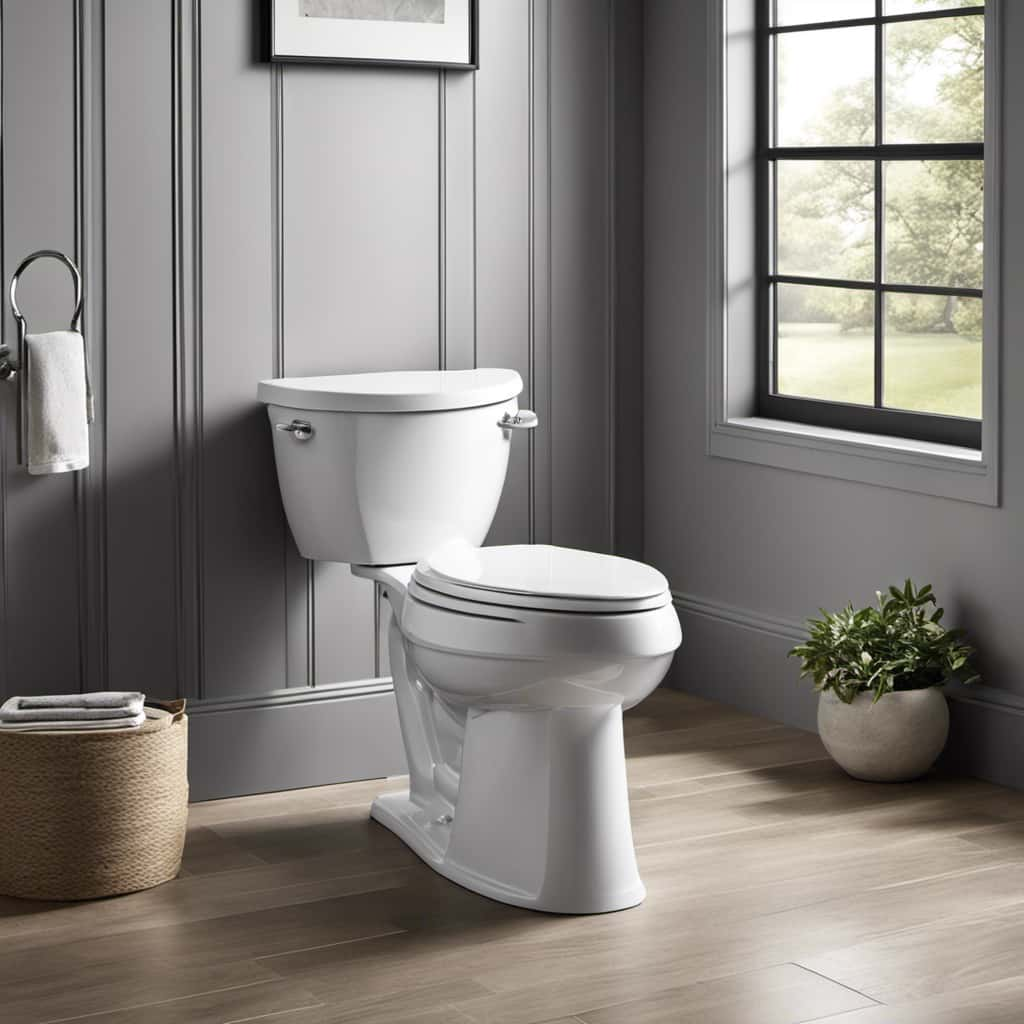
Instead of disposing of waste in a regular trash bin, consider eco-friendly disposal methods, such as composting. This involves mixing the waste with sawdust or other organic materials to aid decomposition.
Implementing a Proper Cover and Seal System
By properly covering and sealing the bucket, we can effectively prevent any unpleasant odors from escaping. Here are some maintenance tips and DIY solutions to implement a proper cover and seal system:
- Use a sturdy lid: Invest in a bucket with a tight-fitting lid to ensure a secure seal. This will help contain the odors and prevent them from escaping.
- Add a rubber gasket: Attach a rubber gasket to the lid to create an airtight seal. This will further reduce the chances of any odors escaping.
- Consider using a double seal system: Place a layer of plastic wrap over the top of the bucket before securing the lid. This extra barrier will provide an additional layer of protection against odor leakage.
Remember, regularly cleaning and disinfecting the bucket, as well as replacing the liner frequently, are essential for maintaining a fresh-smelling toilet.
With these maintenance tips and DIY solutions, you can effectively control odors and ensure a pleasant experience with your bucket toilet.

Frequently Asked Questions
Are There Any Specific Types of Odor Control Products That Work Best for Bucket Toilets?
Types of odor control products for bucket toilets depend on personal preference and effectiveness, such as deodorizing powders or natural additives like vinegar. Additionally, regular cleaning, proper ventilation, and sealing the bucket can help maintain an odor-free environment.
How Often Should I Clean and Disinfect My Bucket Toilet to Prevent Odors?
Regular cleaning and disinfection of the bucket toilet is crucial to prevent odors. Ventilation is also important in keeping the area fresh. Our advice for maintaining hygiene includes frequent cleaning and proper ventilation.
Can I Use Regular Household Cleaning Products to Clean My Bucket Toilet?
We can use alternative cleaning products for bucket toilets. DIY methods for cleaning a bucket toilet are effective and practical. Regular household cleaning products may work, but it’s best to use specific products to prevent odors.
What Can I Do to Effectively Manage and Dispose of Waste From a Bucket Toilet?
To effectively manage waste from a bucket toilet, we recommend using proper disposal techniques such as regular emptying and sealing the waste bag tightly. This helps prevent odor and maintain a hygienic environment.
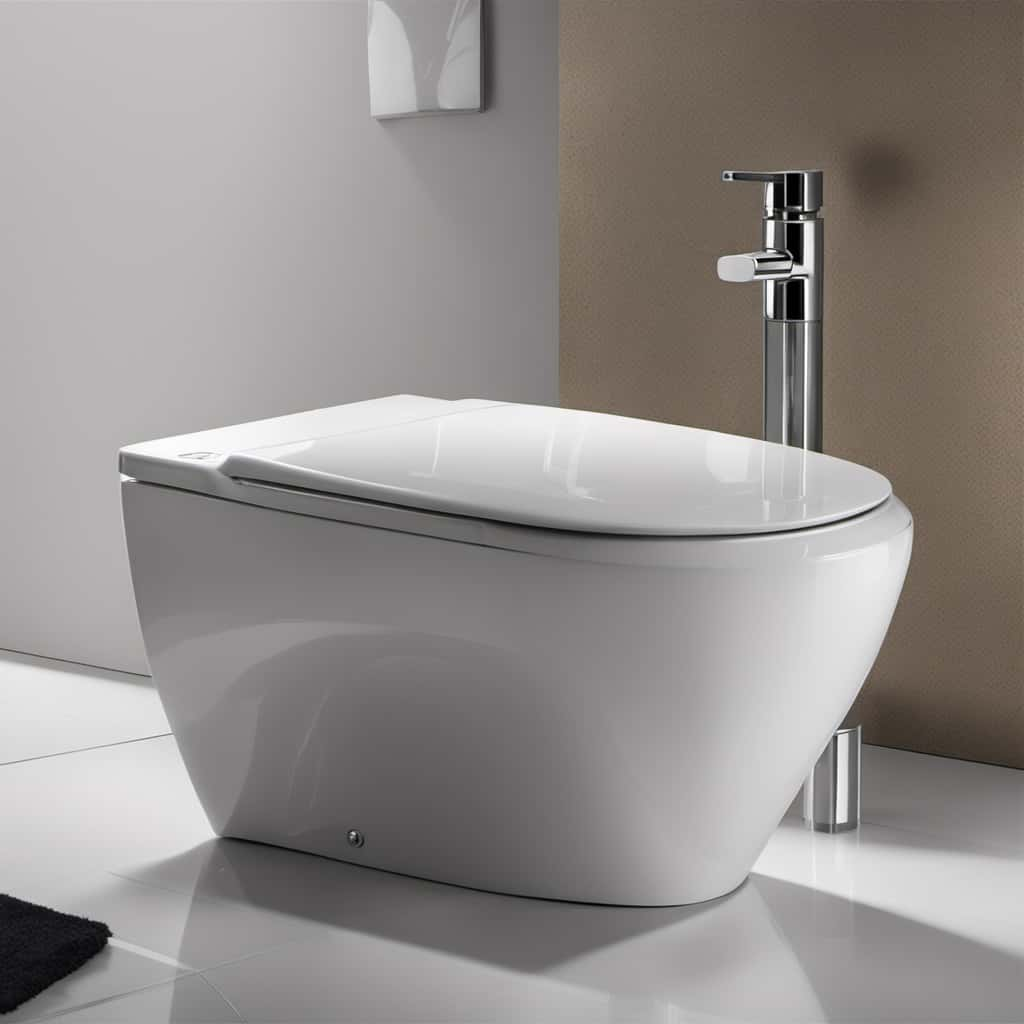
Are There Any Specific Materials or Techniques That Can Be Used to Create a Proper Cover and Seal System for a Bucket Toilet?
When it comes to cover materials and sealing techniques for a bucket toilet, we’ve found that using a tight-fitting lid made of durable plastic and sealing any gaps with silicone caulk can help prevent odors from escaping.
Conclusion
In conclusion, keeping a bucket toilet from smelling requires proper ventilation, regular cleaning, and the use of odor control products.
It’s also important to manage waste effectively and implement a proper cover and seal system.
By following these steps, you can ensure a clean and odor-free bucket toilet experience.
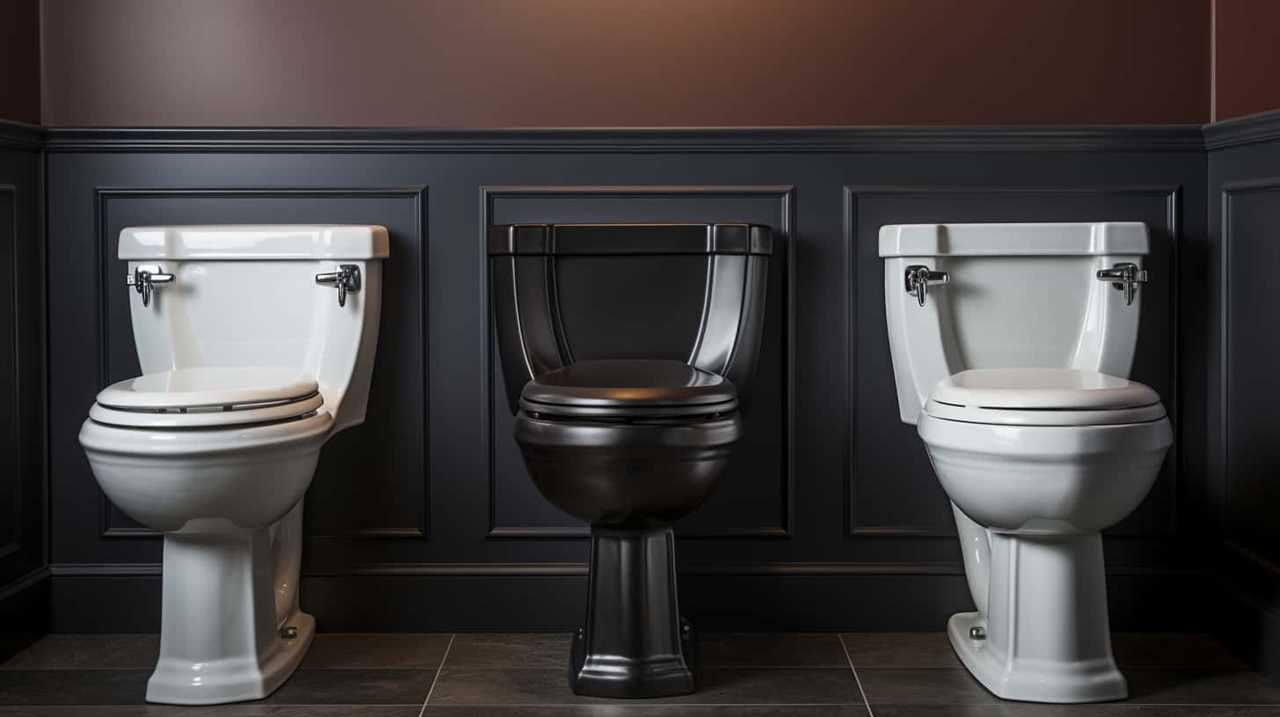
So, don’t let the fear of unpleasant smells deter you from using this practical and convenient sanitation solution.
